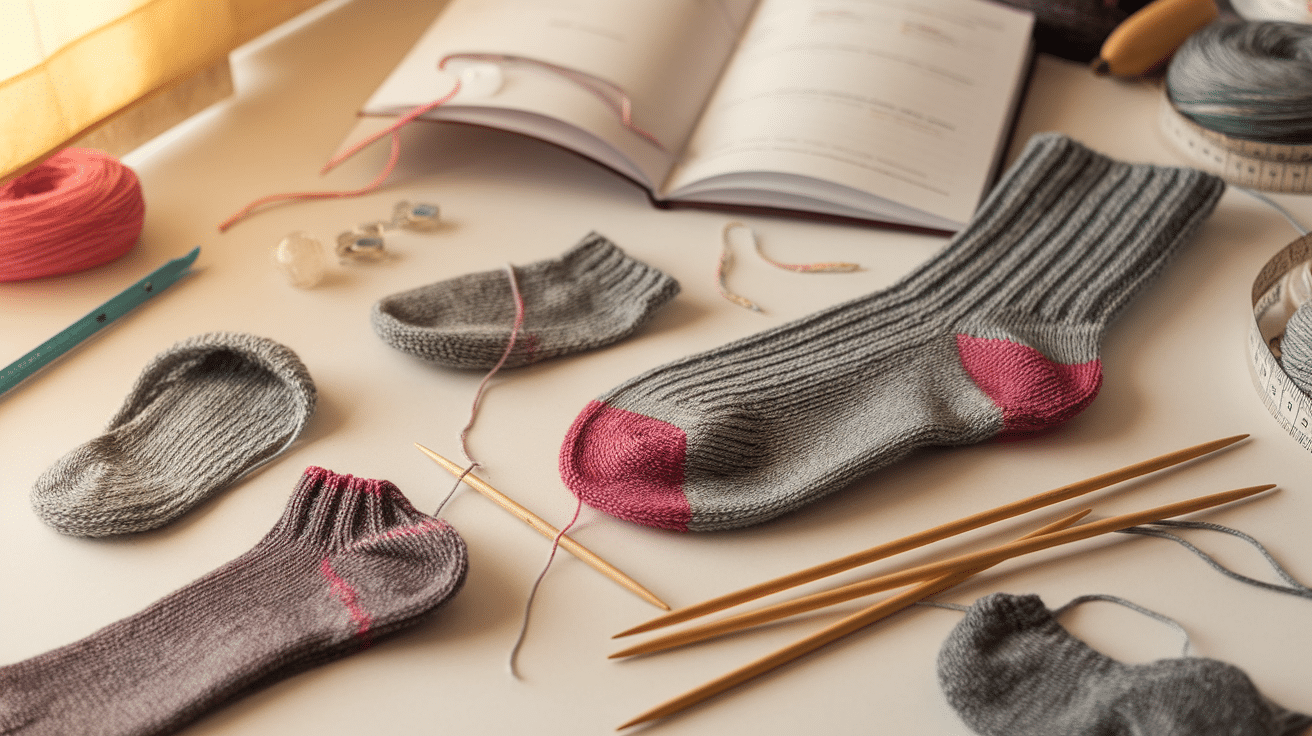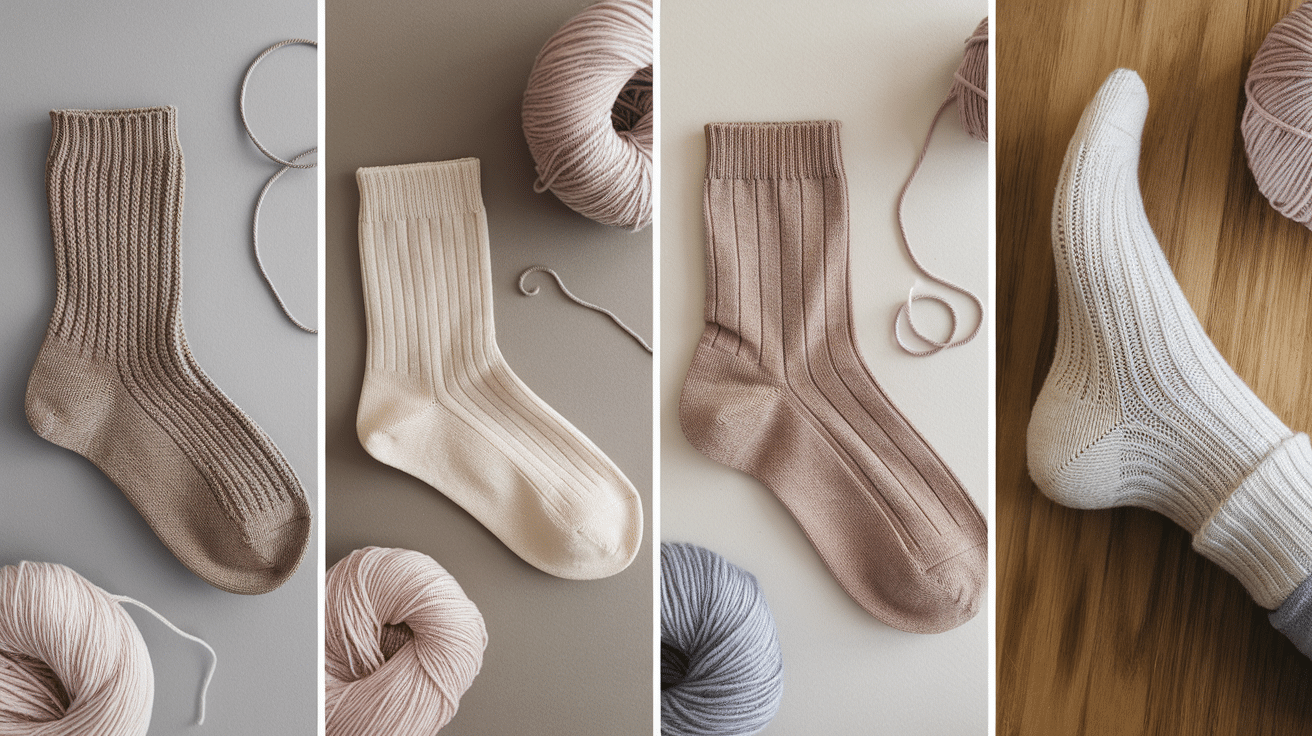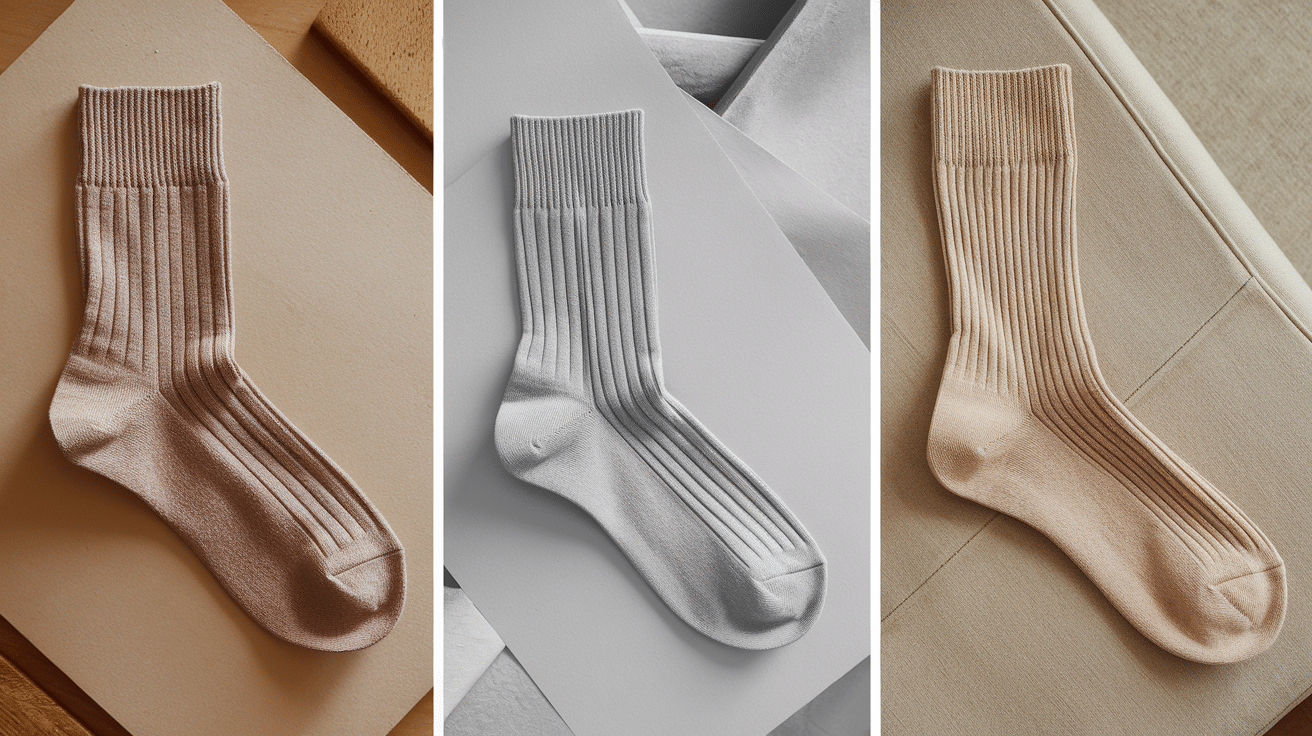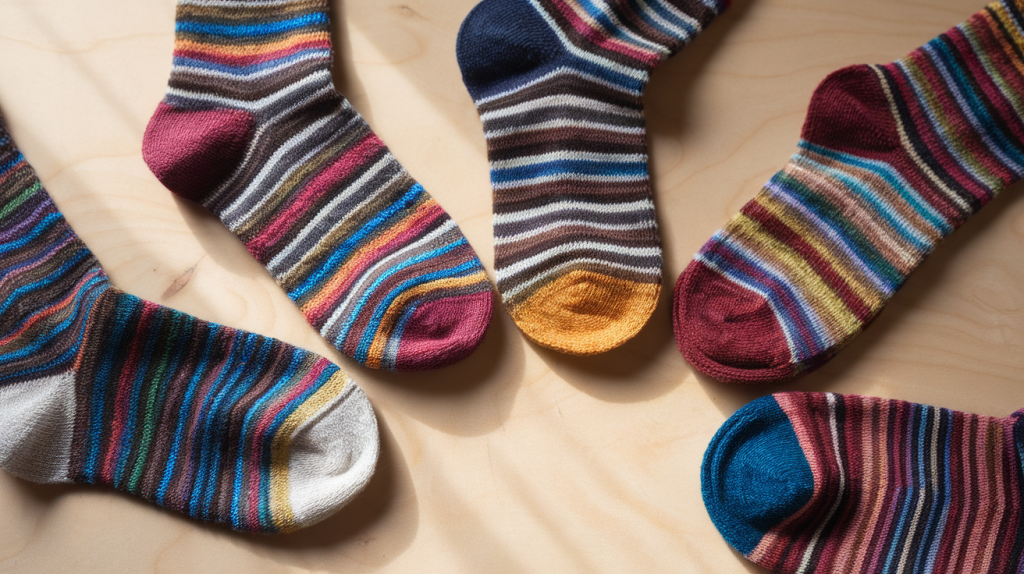Knitting socks requires choosing the right heel type to ensure a comfortable fit and a durable structure. Different heel constructions affect how the sock fits around the foot and ankle, making it important to understand the options available.
Some common sock heel types include the heel flap, gusset, short-row heel, afterthought heel, and fish lips kiss heel. Each has its own construction method and works best for different foot shapes and knitting styles.
The right heel choice depends on the level of stretch, support, and shaping needed. Some heels provide extra room for high insteps, while others create a snug fit.
This guide will explain various knit sock heel types, their benefits, and how to choose the best one for your next project.
What Are Knit Sock Heel Types?

Sock heels come in different shapes and styles to give comfort, support, and a good fit.
The heel’s construction affects how the sock fits, stays in place, and wears over time. Some are snug and structured, while others offer more stretch.
Common types include the heel flap and gusset, German short-row, afterthought heel, and fish lips kiss heel.
Each one fits different foot shapes and knitting styles. Some give extra space for high insteps, while others look smooth and simple.
Picking the right heel helps the sock last longer and fit better. Knowing the options makes it easier to choose the best one for your project.
Popular Knit Sock Heel Types

Sock heels come in many styles, each with its own shape and fit. Some are soft and smooth, while others are firm and structured. Choosing the right one depends on how you want the sock to feel on your foot.
1. Heel Flap and Gusset
This firm heel works well for long-lasting socks. The flap provides padding at the back, and the gusset adds space around the arch. It’s great for people with high insteps.
After knitting the heel flap, you pick up stitches along it. Then, you shape the heel using decreases to form a snug fit. This method gives the sock support and strength.
Though it takes more time to knit, the result is a sturdy heel. It’s often reinforced with slip-stitch knitting. That helps it handle regular wear and tear better than most others.
2. German Short-Row Heel
This heel has a round, smooth shape that fits the heel closely. It’s made using short rows and does not need a gusset, giving it a cleaner, simpler look.
It works well for both toe-up and cuff-down socks. Since there’s no need to pick up stitches, many knitters find it easier. The double-stitch or wrap-and-turn methods help avoid holes.
It creates a snug fit but may feel tight for high insteps. The heel is soft and blends well into the sock. It’s a good choice for knitters who want a fast finish.
3. Afterthought Heel
The afterthought heel is made at the end of the project. You knit the sock first and add the heel later. A line of waste yarn holds the place for where the heel will go.
When the sock is done, you remove the waste yarn and pick up the stitches. Then you knit the heel in the round, like a toe. This method keeps stripes or color patterns from breaking.
It’s a good choice for colorwork or self-striping yarn. It’s also easy to remove and re-knit if it wears out. However, it doesn’t offer as much arch support as other heels.
4. Fish Lips Kiss Heel
This heel is shaped using short rows for a tight and smooth fit. It doesn’t use a gusset or picked-up stitches, making it quick and easy to knit.
It’s great for both toe-up and cuff-down patterns. The instructions are easy to follow, even for newer knitters, and the finished heel has a clean and neat appearance.
It’s a good everyday option but may feel tight on high arches. It lacks the extra depth that other heels offer. Still, it’s popular for its simplicity and speed.
Other Knit Sock Heel Types

Beyond the most common heels, several other options offer unique shaping and fit benefits. These variations allow knitters to customize their socks for different foot types and style preferences.
1. Square Heel/Dutch Heel
The square or Dutch heel is typically used for cuff-down socks and works with any stitch count. It features a boxy shape that provides a deeper fit than other heel types.
The structured shape makes it a good choice for those who prefer extra room in the heel area. This method involves a series of decreases that create a strong, well-defined heel cup.
While it is not as contoured as some other heel types, it offers a solid and comfortable fit.
2. Round/French Heel
This method is similar to the Dutch heel but has a more rounded shape. The round heel creates a curved, comfortable fit that follows the natural shape of the foot.
It is often used in traditional sock patterns and is a good choice for those who want a classic, snug heel that is not too deep.
This heel is shaped using a combination of decreases and short rows, creating a balanced and comfortable structure.
3. Fleegle’s Heel
Fleegle’s heel combines elements of the German short-row heel and the heel flap, making it a great option for knitters who want the benefits of both techniques.
This method does not require picking up stitches, making it easier than a traditional heel flap and gusset.
It works well in both toe-up and cuff-down sock patterns. While it provides a well-shaped heel, it requires careful attention to stitch placement and shaping, making it more suited for knitters with some experience.
When to Use Each Heel Type
Choosing the right heel type depends on fit, comfort, and how the sock will be used. Some heels are better for high arches, while others work well for simple, smooth designs. Matching the heel style to the wearer’s needs helps create socks that fit well and last longer.
- Heel Flap and Gusset: This style is best for high arches and structured socks. The gusset provides extra space across the foot, and the heel flap adds strength. It is also ideal for everyday wear and shoes.
- German Short-Row Heel: This heel is great for a clean, rounded shape with no extra bulk. It works well in toe-up or cuff-down socks and is quicker to knit. However, due to the tighter fit, it is not ideal for high insteps.
- Afterthought Heel: This is good for colorwork or striping patterns. The heel is added later, keeping the sock design intact. It is easy to replace but requires careful planning.
- Fish Lips Kiss Heel: This heel is best for quick, easy socks with a smooth finish. It works well for most foot shapes but may feel tight on high arches. It is great for knitters who prefer short-row methods.
Each heel type offers a different benefit. Picking the right one helps make socks more comfortable, stylish, and long-lasting. Try a few styles to find the one that best suits your needs.
Pros and Cons of Each Heel
Each sock heel type offers different benefits, depending on your project needs. Some heels are more supportive and durable, while others are easier and quicker to knit. Understanding the strengths and limits of each heel style helps knitters make the right choice.
| Heel Type | Pros | Cons |
|---|---|---|
| Heel Flap and Gusset | – Durable and comfy for daily wear – Fits high arches well – Reinforced for strength | – Takes more time to knit – Picking up stitches may be tricky for beginners |
| German Short-Row Heel | – No gusset needed – Smooth, seamless look – Works toe-up or cuff-down | – Can feel tight on high insteps – Needs careful tension to avoid gaps |
| Afterthought Heel | – Easy to customize – Pattern stays intact for colorwork – Heel can be replaced | – Needs advance planning – Cutting into sock may feel hard for new knitters |
| Fish Lips Kiss Heel | – Fast and simple – No gusset or stitch pickup – Smooth, snug fit | – Not great for high arches – May feel too tight for some foot shapes |
Every heel has its own purpose and place in sock knitting. Choosing the right one depends on the fit you need and the knitting method you prefer. Trying out a few styles will help you find your favorite.
How to Choose the Best Heel Type for Your Project
Choosing the right sock heel affects how the sock fits, how comfortable it feels, and how well it holds up over time. Your decision should be based on foot shape, how the sock will be worn, and your knitting skill.
The heel flap and gusset offer extra room and strong support for high arches. Although it takes more time to knit, it gives a durable and snug fit. The reinforced heel makes it ideal for socks worn often.
If you prefer a smooth and quick option, the German short-row heel is a good choice. It’s easy to knit, fits well, and doesn’t require picking up stitches—though it may feel tight on deeper arches.
The afterthought heel keeps patterns intact and is easy to replace later. The fish lips kiss heel is fast, simple, and fits most feet, making it perfect for everyday socks and newer knitters.
Start Knitting Different Heels
Trying out different sock heel types is the best way to find what fits and feels right. Each method has a unique shape and style that can suit different feet and preferences. Testing several types helps knitters gain confidence and learn what works best.
Knitting small sock samples is a great way to practice. It lets you see how each heel affects fit and structure. Beginners can start with simple options like the fish-lip kiss heel or the German short-row heel.
More experienced knitters might try the heel flap and gusset or the afterthought heel for more shaping. As you get more comfortable, mixing and matching techniques allow for a more custom fit. This way, you can make socks that are both comfortable and long-lasting.
Conclusion
Choosing the right sock heel is an important part of knitting socks that fit well and last long. Each heel type offers a different balance of comfort, durability, and ease of knitting. Understanding the differences helps knitters create socks that match their needs.
The heel flap and gusset work best for high insteps and extra durability. The German short-row heel creates a smooth and snug fit without a gusset. The afterthought heel allows easy customization and replacement, while the fish-lips-kiss heel provides a quick and simple option.
Trying different heel types helps knitters find their favorite methods. By practicing and customizing their socks, knitters can create comfortable, unique, well-fitted socks. The best way to learn is to experiment with different techniques and find what works best.
Frequently Asked Questions
Which Knit Sock Heel Type Is Best for Beginners?
The fish-lip kiss heel and the German short-row heel are great for beginners. They do not require picking up stitches or making a gusset, making them easier to learn.
What Is the Most Durable Sock Heel Type?
The heel flap and gusset are the most durable options. The reinforced heel flap adds extra strength, making it ideal for socks that will experience heavy wear.
Which Heel Type Works Best for High Arches?
The heel flap and gusset provide extra room, making it a great choice for people with high insteps. The gusset allows for a better fit across the top of the foot.
What Is the Fastest Heel to Knit?
The fish lips kiss heel is one of the quickest to knit. It does not require a gusset or picking up stitches, making it a simple and efficient choice.









